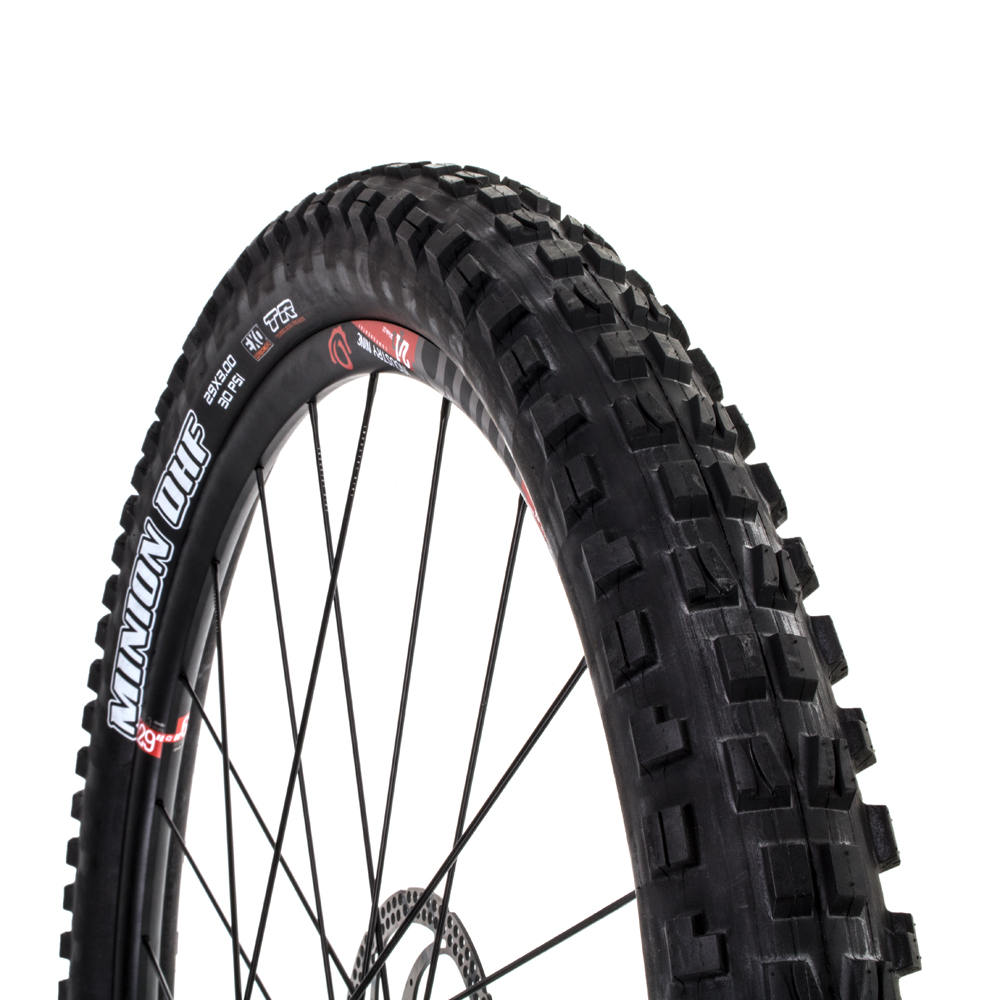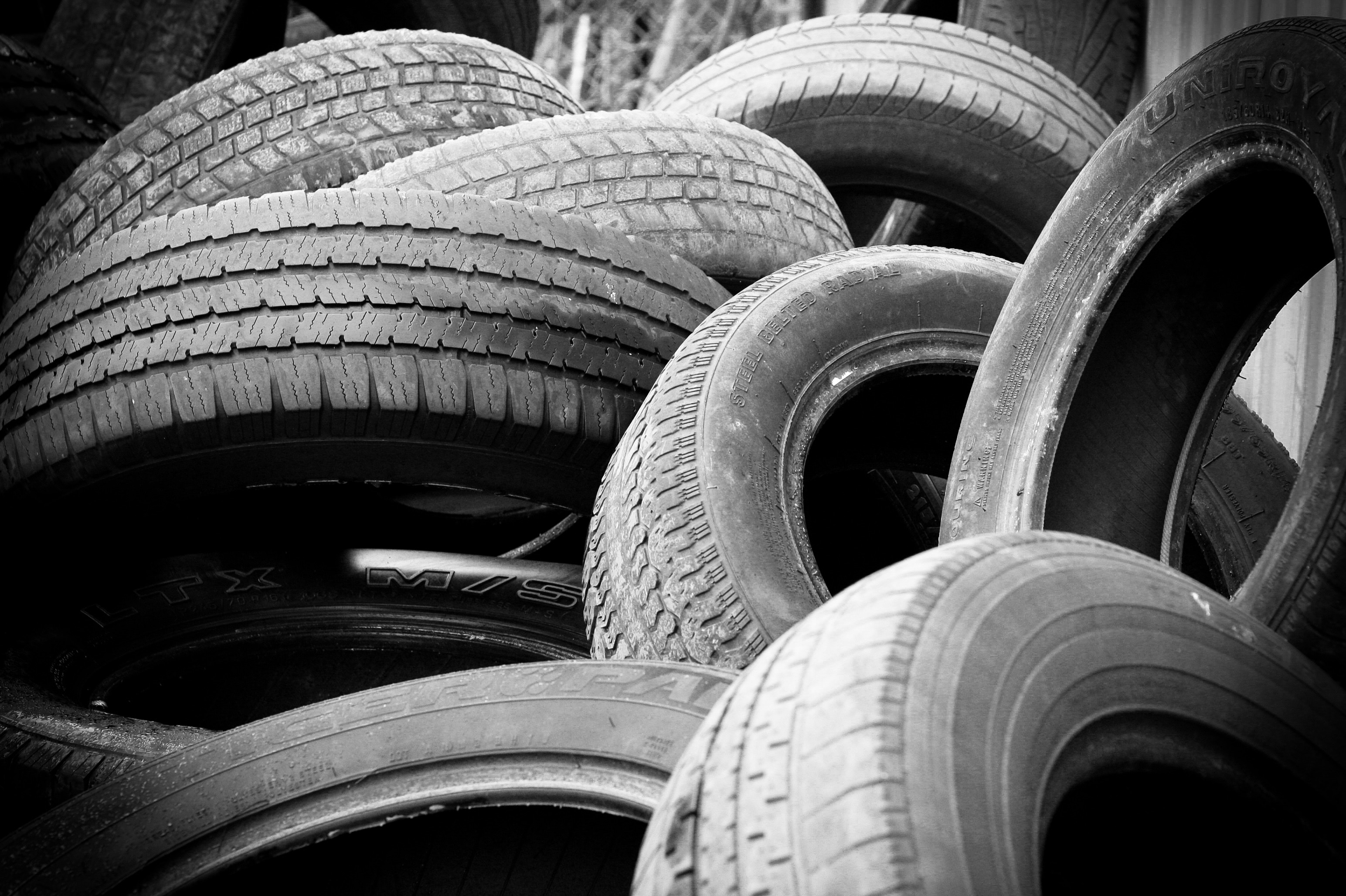Maybe you’ve heard of them, maybe you haven’t. Maybe you’re already riding them. Either way, tubeless tires are starting to take over the cycling world, so we’ve compiled this handy pros and cons list for you. Read through it and then decide whether tubeless is right for you!
What’s Tubeless?
 Tubeless tires are what they sound like: rather than a wheel, tube, and tire, the tire seals directly to the wheel itself. Inside the tire is a small amount of liquid — essentially liquid latex, though different companies have their own proprietary compounds — that coats the inside of the tire, sealing tiny pores and punctures. In most cases, there’ll also be a strip of tape or rubber that lines the outside of the rim to seal off the spokes from the tire. These days, lots of tires and wheels describe themselves as “tubeless ready,” even if you’re using them with tubes, but there are still tires and wheels that won’t work for tubeless setups. So what do you need to know before making the switch?
Tubeless tires are what they sound like: rather than a wheel, tube, and tire, the tire seals directly to the wheel itself. Inside the tire is a small amount of liquid — essentially liquid latex, though different companies have their own proprietary compounds — that coats the inside of the tire, sealing tiny pores and punctures. In most cases, there’ll also be a strip of tape or rubber that lines the outside of the rim to seal off the spokes from the tire. These days, lots of tires and wheels describe themselves as “tubeless ready,” even if you’re using them with tubes, but there are still tires and wheels that won’t work for tubeless setups. So what do you need to know before making the switch?
Cost
This factor is probably the hardest to pin down, and probably the least important as well. A lot of wheels and tires are already tubeless-compatible (or “tubeless-ready”), so you’re not changing much in terms of what you buy. You don’t need to buy tubes with tubeless tires, but you’ll need sealant and maybe valve stems. If you live in an area with tons of thorns on the bike paths, or you’re riding trails full of sharp rocks and getting pinch flats every other weekend, tubeless might save you a few bucks on rubber. Overall, though, you’re not likely to spend or save much extra by switching unless you go through tubes like crazy.
Weight
When you ride a bike with a tube setup, each wheel needs a wheel, tire, and tube. When you run tubeless, you need a wheel, tire, sealant, and separate valve stem. Most mountain bikes that you order online will be tubeless ready, but come with a tube installed, as sealant doesn’t ship well. So you know the wheel and tire are compatible with either setup. As far as the difference between the sealant and the tube, some experiments report savings of up to 150 grams per wheel, so if you’re a stickler for weight, tubeless can make your whole bike almost half a pound lighter.
One thing to note is that these numbers work out slightly differently on road bikes. Road tubes are already lighter than mountain tubes, so you’re not saving as much weight on rubber. And the tubeless versions of road tires are often heavier than their clincher cousins, so you might not see much weight saving on your road bike. Luckily, the benefits don’t stop there.
Puncture Resistance
 This is the big one, and the reason that the vast majority of the mountain bike market has switched to tubeless tires in the last decade or so. To hear most riders tell it, tubeless tires simply don’t get flats. Period. The sealant on the inside rolls around, coating the tire and filling any holes cause by thorns or other punctures in the tire as you ride without any loss of pressure. And pinch flats — caused when a hard impact pinches the tube between the rim and tire — are a thing of the past. After all, there’s no tube to pinch.
This is the big one, and the reason that the vast majority of the mountain bike market has switched to tubeless tires in the last decade or so. To hear most riders tell it, tubeless tires simply don’t get flats. Period. The sealant on the inside rolls around, coating the tire and filling any holes cause by thorns or other punctures in the tire as you ride without any loss of pressure. And pinch flats — caused when a hard impact pinches the tube between the rim and tire — are a thing of the past. After all, there’s no tube to pinch.
Road cyclists rarely have to worry about pinch flats, due to the higher pressure and smoother surfaces they ride on, but thorns or glass can really ruin a weekend ride. Going tubeless means you don’t have to worry about flats again!
Rolling Resistance
 This one is huge for road riders. In the last few years, road cyclists have moved away from the super-skinny tires of yesteryear and into wider, lower-pressure rubber. Tire pressures in the 90s, even the high 80s, allow for a smoother ride over the minor bumps in the road, making for more comfort and even a faster ride. Clincher tires also lose a small amount of energy to internal friction between the tire and tube, which goes away with tubeless setups. Side by side tests show lower rolling resistance and better puncture protection on road tires, which translates to speed and longevity on your rides.
This one is huge for road riders. In the last few years, road cyclists have moved away from the super-skinny tires of yesteryear and into wider, lower-pressure rubber. Tire pressures in the 90s, even the high 80s, allow for a smoother ride over the minor bumps in the road, making for more comfort and even a faster ride. Clincher tires also lose a small amount of energy to internal friction between the tire and tube, which goes away with tubeless setups. Side by side tests show lower rolling resistance and better puncture protection on road tires, which translates to speed and longevity on your rides.
Pressure
 Besides the benefits to rolling resistance mentioned above, tubeless tires also don’t lose pressure over time at nearly the rate that clinchers do. We’re all familiar with having to pump up our tires every other ride to keep pressures high, but with tubeless, you can go months at a time without a top-off. And on the other end of the spectrum, mountain bike tires can be run at much lower pressures, making for better cornering, braking, and grip. Some pro racers even keep their pressures under 20 psi, as compared to the 35+ that most clincher tires need.
Besides the benefits to rolling resistance mentioned above, tubeless tires also don’t lose pressure over time at nearly the rate that clinchers do. We’re all familiar with having to pump up our tires every other ride to keep pressures high, but with tubeless, you can go months at a time without a top-off. And on the other end of the spectrum, mountain bike tires can be run at much lower pressures, making for better cornering, braking, and grip. Some pro racers even keep their pressures under 20 psi, as compared to the 35+ that most clincher tires need.
Things to Note
First of all, no system is completely, 100% immune to flats. There’s always the possibility of a big crash or super sharp rock tearing a hole in the tire that the sealant can’t fill. As such, you’ll need to bring a tube with you when you ride, since repairing and re-sealing a tubeless tire on the side of the road or trail is essentially impossible.
Second, installation of tubeless tires is usually harder and messier than installing clinchers. Sealant can spill and make messes, seating the tire on the rim can be extremely difficult due to the tighter beads required to maintain a good seal, and you might need a specialized pump or CO2 canister to initially inflate the tire. Once you get everything up and running, you probably won’t have to mess with it until the tread wears out on your tires, but the initial setup can be a real pain.
Takeaways
If you’re a mountain biker, tubeless is a no-brainer. Lighter wheels, lower pressure, better grip, no punctures, no pinch flats…that’s the dream! Just bring a spare tube with you in the unlikely case that you get a puncture that sealant can’t fix, and you’re golden!
If you’re a road cyclist, it’s a little more complicated. The weight savings are minimal, and a tubeless setup might even end up being a tad heavier than a clincher. Punctures are less frequent than on mountain bikes, and pinch flats almost never happen, so you’re not gaining much there. The biggest benefits to road cyclists are rolling resistance and lower pressure, both of which will make for smoother, faster rides. Whether it’s worth the effort is up to you!
So let us know in the comments. Do you ride tubeless? Road or mountain? What’s been your experience?




What’s the highest practical pressure for tubeless road tires? I’ve read in many blogs that pressures over 50 PSI suffer a high rate of catastrophic blowouts. Also, how often does a bike have to be ridden in order to ensure that the sealant doesn’t clump and dry? i.e. if my road bike has tubeless tires and I don’t ride it the entire winter, will it still be functioning in the spring?
Our co-worker Andrew has put hundreds of miles on his tubeless 25mm road tires, at pressures of 100-110 psi, and never experienced a catastrophic blowout. 50 psi would be far too low for a road tire, and far too high for a mountain tire, which should run in the 25-35 psi range. It’s possible that some are experiencing blowouts due to improper sealing or incompatibility between tires and rims, but we have lots of firsthand experience here in the office and have had no such issues.
It’s important to remember that sealant is not 100% necessary to make the tire seat properly on the rim. Andrew runs sealant in his mountain bike but not his road bike. As to longevity, mileage will vary. Some of the thicker sealants advertise a lifetime in the 4-6 week range, some in the 4-7 month range, and Finish Line sealant claims that their sealant lasts the lifetime of the tire, never clumping, drying or separating. Worth a look!
I run tubeless on all of my off-pavement bikes (MTB, ‘cross/gravel, fat) and I would never go back to tubes. All of the benefits stated in the article are there and it’s definitely the best solution for my riding. I haven’t converted to road tubeless, mainly because I don’t need any new wheels and spending a pile of cash on unnecessarily swapping out rims and tires doesn’t make any sense to me. When the time comes that I need to build new wheels, I’ll give tubeless a serious look and probably make the change to wider, tubeless rims.
Sealant will dry up in a few months, at least to the point that it won’t work anymore. You can pop the tires off (one bead, at least), remove any “oysters” or other clumps, then reassemble and add more sealant.
I typically only use 1/3 – 1/2 the recommended amount of sealant in my tires. They still seal fine, but I have very few issues with clumps forming in them. Typically, all I see is a fairly even coating of dried latex. I have to add sealant 3-4 times per year, but it’s easy if you have removable valve cores and a syringe.